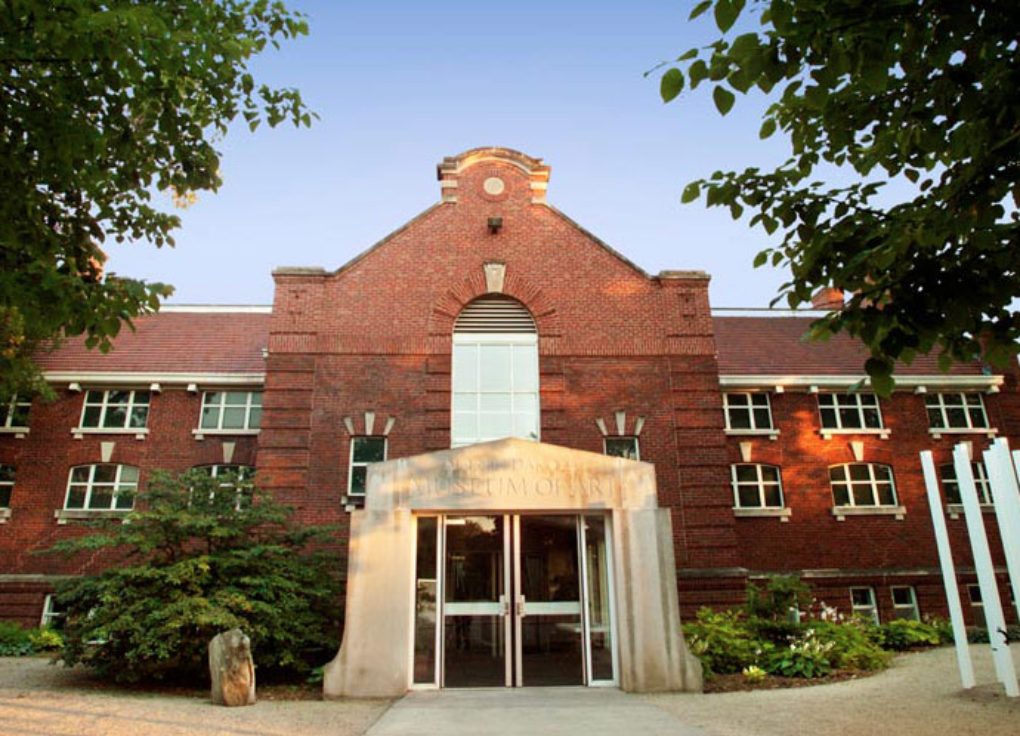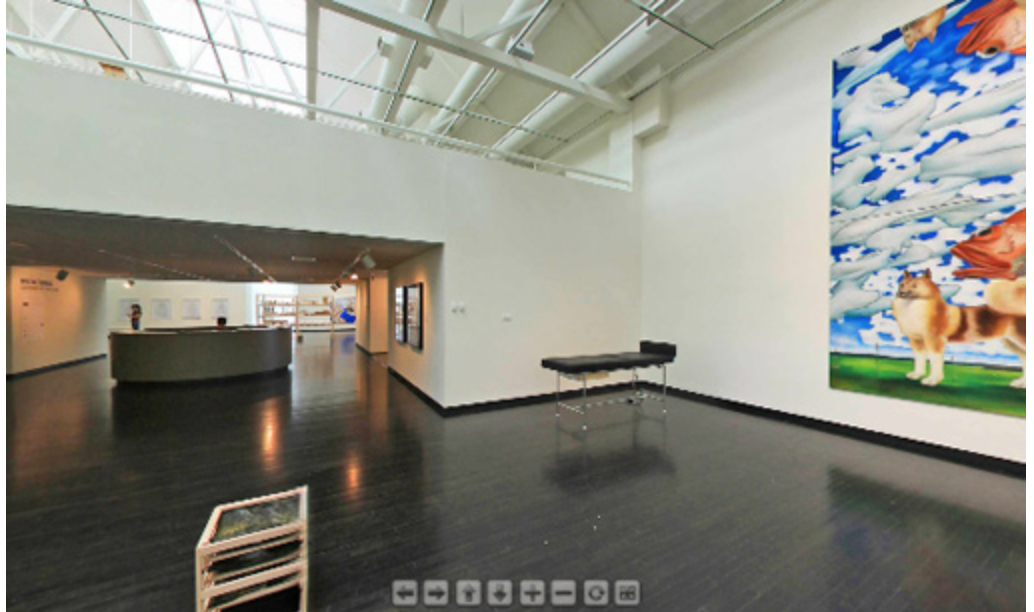North Dakota Museum of Art (NDMOA) Seeks a Director
OPPORTUNITY TO LEAD A SMALL BUT VITAL ART MUSEUM OF CONTEMPORARY ART THAT HAS BEEN IMPACTFUL REGIONALLY AND NATIONALLY.
The North Dakota Museum of Art (NDMOA) seeks a director to succeed its founder, who built it over 50 years from an exhibit in a university hall into a widely recognized, influential art museum. Located on the campus of the University of North Dakota, it serves as the state art museum dedicated to bringing contemporary art to the city and to a rural population through exhibits and educational programs. The museum is supported by the state, generous donors, grants, and a dedicated foundation.
The new director will embrace the mission of engaging and challenging people of the northern Plains with contemporary art. They will lead a small staff accustomed to working as a team beyond their job descriptions to produce meaningful programming and contribute to the state’s cultural life. The new director, the board, and the staff will amplify the vision and translate it into new exhibitions, collections, and programs underpinned by a stable, sustainable financial base.
OPPORTUNITIES
Play a central role in defining the future direction of a vital, successful and healthy cultural institution.
Drive the future creative vision of an art museum that has had extraordinary impact and influence for its size and location.
Help the museum expand and diversify its financial base. It is well-positioned to do so, with a sound reputation and supportive patrons.
Collaborate with a capable, devoted board to expand its role in ensuring the continued health of the museum.
Further refine the operating model for greater effectiveness, efficiency, and sustainability.
Live in a beautiful setting and a supportive community with a high quality of life.
CHALLENGES
Succeeding an accomplished and admired founder.
Quickly becoming attuned to the regional populace and connecting to an established network of supporters.
Further developing revenue streams for greater stability and sustainability.
ABOUT THE MUSEUM
“The Museum's purpose is to foster and nurture the aesthetic life and artistic expression of the people living on the northern Plains.”
NDMA grew from the initiative of one person, whose vision evolved over time. Laurel Reuter, a graduate student in literature, began mounting displays of art in 1972 in a UND building designated as the North Dakota Art Galleries, with students as the target audience. In 1981, the state legislature made the Galleries the state’s official art museum, renamed the North Dakota Museum of Art. Reuter had already begun amassing a building fund that reached $1 million. The Friends of the North Dakota Museum of Art, formed in 1984, augmented that with $400,000. Architect Harvey Hoshour designed the transformation of a former gymnasium into the museum that stands today, first opened in 1989.
Since its start, the North Dakota Museum of Art has collected international contemporary art in all media from the early 1970s onwards. One important focus is the visual history of the Northern Plains. The museum has also been assembling a survey collection of contemporary Native American art, presciently starting with the early 1970s.
Reuter’s intent for the NDMA has been to serve the people of the region rather than be an academic arm of the university. People of eastern North Dakota and western Minnesota have embraced this vessel of culture in a region in which contemporary art museums are not common. The museum develops exhibitions that first show on site. Many of these then circulate throughout North Dakota with accompanying educational presentations through the museum’s Rural Arts Program. Some have traveled internationally to notable acclaim. NDMA nurtures regional artists, some of whom have developed national reputations, and small galleries via the Art Gallery Association. Over the years the museum has achieved an international profile while sustaining its focus on the region.
Its devotion to its northern Plains location was shown by NDMA’s response to devastating flooding along the Red River in 1997. As one of the few buildings in Grand Forks that was not flooded, the NDMA became a community center, hosting gatherings and church services and helping residents process the experience of a disaster through two exhibitions, an oral history project, a children’s mural project, and a design forum.
After a remarkable 50 years, Laurel Reuter will retire early in 2022 after a successor has been identified. She is leaving her successor two years of programming already planned to ease the transition. The board and staff will welcome a new leader to pick up the reins and guide this cultural resource further along its established and successful path, finding new ways to expand its reach and secure its operation.
CANDIDATE PROFILE
The new director will have a broad, deep knowledge of art and art museums to underpin a vision for a museum that is integral to regional culture. They will be someone who has traveled widely to experience art, with a good eye and strong aesthetic standards. This person’s passion for art will feed ideas for captivating exhibitions and inspiring presentations, as they serve in a director/curator role. Respect for the regional audience, who have welcomed art into community life, will guide further efforts to deepen the museum’s connections. While delegating much of the day-to-day museum operation, the new director will foster and encourage a high-functioning team, oversee operational upgrades, and ensure financial stability. A gracious person, the director will know how to spread awareness of the museum, promote its inspiring story, and further expand the audience. This leader will embrace life on the northern Plains and the varied constituencies who live there.
RESPONSIBILITIES
Intellectual and creative leadership, carrying forward and further developing the museum’s artistic vision.
Overseeing development and implementation of the museum’s strategic plan; ensuring its fulfillment through annual operational planning and execution.
Managing the staff and fostering their growth through appropriate delegation and accountability.
Maintaining and further developing networks of artists, galleries, and supporters.
Fiscal stewardship that ensures efficient use of and accounting for resources.
Leading fundraising efforts and personally cultivating and soliciting support with help from board members and staff.
QUALIFICATIONS
An advanced degree in art or art museum studies, such as an MA, MFA or PhD.
At least five years directing an art museum or a curatorial department in an art museum. Experience effectively managing people and finances.
Ability to generate exhibition ideas that engage and challenge, and also to run with others’ good ideas.
Demonstrated success leading teams in producing exhibitions and educational programs.
Successful experience raising funds from individuals, businesses, and granting entities.
An outgoing personality, a record of making connections and forming partnerships.
Skills in public relations.
ABOUT THE CITY AND REGION
Grand Forks, incorporated in 1881, is a city of about 53,000 near the eastern border of North Dakota, part of a larger metropolitan area of a little under 100,000 straddling the Minnesota border. Its name comes from the meeting of the Red River and the Red Lake River.
Agriculture has been the base of the region’s economy, but today, the city’s economy is more diverse, with the University of North Dakota a center of higher education, and defense, health care, food processing, and manufacturing industries as well as scientific research providing an array of opportunity and activity.
Residents cite the quality of life in Grand Forks, there being many advantages of an urban area with few of the disadvantages, such as heavy traffic. The Greater Grand Forks Greenway is a large park along the Red River within the city. The Plains setting provides scenic beauty as well as open spaces for cycling, cross-country skiing, and hiking. The climate in Grand Forks is characterized by four distinct seasons. Winters can be notably cold and snowy – great for winter sports, while summers are warm. Spring and fall are temperate. Besides the NDMOA, the university campus has performing arts and music venues as well as sports arenas, and UND is known for its high-ranked hockey team and devoted local fan base. A readily accessible airport makes travel easy.
Besides the many cultural opportunities provided by a university, Grand Forks is a 75-minute drive from Fargo, another small city with an opera company and an art museum, among other attractions. Winnipeg, Manitoba, a city of 750,000 named in 2010 as the cultural capital of Canada, is two and half hours away by car. Residents of Grand Forks use the airports in Winnipeg and Fargo as additional options for travel.
People from other places who live in Grand Forks say people there are friendly and less class-conscious than elsewhere, that it is an easy place to make friends, raise a family, own a home or have a business.
HOW TO APPLY
Nominations welcome.
Apply in confidence: Email cover letter, resumé or CV, salary requirement, and names of 3 references with contact information by December 13, 2021 to retained search firm: Scott Stevens, Senior Search Consultant, Museum Search & Reference at: SearchandRef@museum-search.com. References will not be contacted without prior permission of the applicant. EA/EO.

